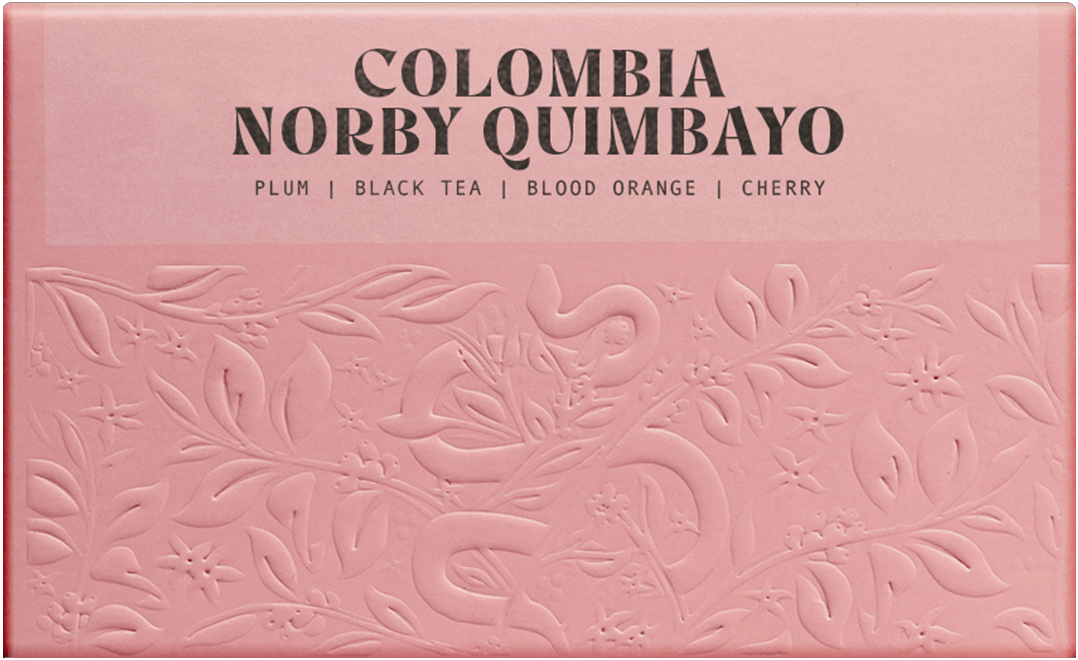Story
This coffee comes from Cofinet, a group of Colombian producers who produce, process, and source coffees across the country. We have long sampled coffees from them, but purchasing has escaped us until now. We are excited to release this coffee as a reflection of what not only Cofinet can do, but the stunning work of Norby Quimbayo.
Almost three decades ago, Norby inherited his farm from his father, initially finding success in producing commodity coffee. However, the coffee price crisis in the early 2000s exposed him to the volatility of the coffee market, prompting him to explore the specialty sector to stabilize and improve his income. During this exploration, he discovered unique coffee varietals like the esteemed Pink Bourbon, which demand more care and attention but offer significantly higher prices due to their exceptional quality potential. This is an altogether familiar story when it comes to coffee cultivation, and the bottleneck that prompts many producers to sell and move to the city. Norby chose to innovate and seek quality, doing so through Cofinet to market his coffee.
Together, they have developed meticulous processing methods, such as the heavily pre-fermented washed protocol. The process begins with careful sorting of ripe Pink Bourbon cherries, removing any low-density or defective fruits. Subsequently, the cherries undergo a 24-hour open tank fermentation before being sealed in oxygen-restricted plastic bags for 90 hours. Throughout the second fermentation stage, strict temperature control ensures that the fermentation mass remains below 22°C. Finally, the cherries are depulped, washed, and meticulously dried on raised beds.
PINK BOURBON
This is a very recently discovered variety found in Acevedo, Huila. Pink Bourbon, or Borbón Rosado, is touted as a hybridization of Red and Yellow Bourbon. On the cupping table, this variety can sometimes be mistaken for an Ethiopian coffee, with its floral notes and its delicate tea-like nature. Since it is a new discovery, little research has been done to confirm its background or origin story, but that has not stopped it from exploding in popularity both with roasters and producers. While it’s less rare that it once was, finding an extremely high quality Pink Bourbon offering is just as difficult, due to its specific growing and picking requirements. Much like Yellow Bourbon, Pink Bourbon is difficult to identify at peak ripeness. Red Bourbon is much easier, as cherries transition from bright red to deep purple within a matter of a week or more. Pink Bourbon can be much more nuanced than its red counterpart, making it difficult to determine the underripe from the mature. With careful picking and processing however, the nuanced nature of Pink Bourbon can be translated into a tremendously delicate and unique cup of coffee.
WASHED PROCESSED COFFEES
The washed process begins with coffee cherries delivered to the washing station, both from the primary market or from farmers bringing their coffee directly to the mill. The cherries are inspected, and an initial quick round of hand-sorting separates the defective coffees before placing them into the hopper. They are then funneled to the depulper, which removes the fruit from the seeds. After that phase is done, the coffee is fermented underwater for approximately 24 hours. This phase of fermentation is crucial, as the yeast and microbes are breaking down the sticky mucilage layer found on the outside of the seed following depulp. Once the 24-hour fermentation is complete, the parchment is emptied into the washing channels, where it is agitated with rakes. During this step, the water is refreshed to ensure proper agitation and washing is taking place. Once the washing is complete, the coffee is taken to the raised drying tables for sun drying.





